Alfa Romeo Junior vs Mercedes B Class – Performance, range & efficiency compared
Two cars, one duel: Alfa Romeo Junior meets Mercedes B Class.
Which one wins in performance, efficiency and value for money? Find out now!
Costs and Efficiency:
Price and efficiency are key factors when choosing a car – and this is often where the real differences emerge.
Alfa Romeo Junior has a noticeable advantage in terms of price – it starts at 25700 £, while the Mercedes B Class costs 33100 £. That’s a price difference of around 7458 £.
Fuel consumption also shows a difference: Mercedes B Class manages with 2.50 L and is therefore decisively more efficient than the Alfa Romeo Junior with 4.80 L. The difference is about 2.30 L per 100 km.
As for range, the Alfa Romeo Junior performs clearly better – achieving up to 410 km, about 327 km more than the Mercedes B Class.
Engine and Performance:
Power, torque and acceleration are the classic benchmarks for car enthusiasts – and here, some clear differences start to show.
When it comes to engine power, the Alfa Romeo Junior has a somewhat edge – offering 280 HP compared to 238 HP. That’s roughly 42 HP more horsepower.
In acceleration from 0 to 100 km/h, the Alfa Romeo Junior is somewhat quicker – completing the sprint in 5.90 s, while the Mercedes B Class takes 6.50 s. That’s about 0.60 s faster.
In terms of top speed, the Mercedes B Class performs slightly better – reaching 250 km/h, while the Alfa Romeo Junior tops out at 206 km/h. The difference is around 44 km/h.
There’s also a difference in torque: Mercedes B Class pulls clearly perceptible stronger with 450 Nm compared to 345 Nm. That’s about 105 Nm difference.
Space and Everyday Use:
Beyond pure performance, interior space and usability matter most in daily life. This is where you see which car is more practical and versatile.
Both vehicles offer seating for 5 people.
In curb weight, Alfa Romeo Junior is slight lighter – 1380 kg compared to 1405 kg. The difference is around 25 kg.
In terms of boot space, the Mercedes B Class offers hardly perceptible more room – 455 L compared to 415 L. That’s a difference of about 40 L.
In maximum load capacity, the Mercedes B Class performs a bit better – up to 1540 L, which is about 260 L more than the Alfa Romeo Junior.
When it comes to payload, Mercedes B Class distinct takes the win – 550 kg compared to 420 kg. That’s a difference of about 130 kg.
Who wins the race?
The Mercedes B Class proves to be slightly ahead and therefore becomes our DriveDuel Champion!
Mercedes B Class is the better all-rounder in this comparison.
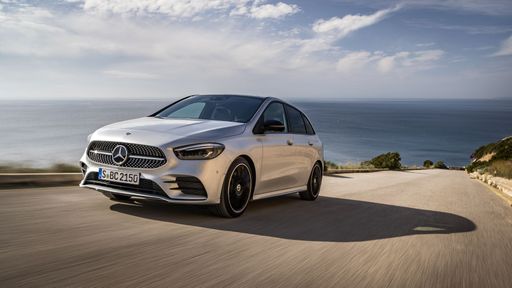 @ group-media.mercedes-benz.com
@ group-media.mercedes-benz.com
Mercedes B Class
Alfa Romeo Junior
The Alfa Romeo Junior captures the essence of Italian design with its sleek lines and compact dimensions, making it an icon of elegance and performance. With a spirited driving experience and a charming retro aesthetic, it appeals to enthusiasts and casual drivers alike. This delightful car embodies the brand's rich heritage while remaining a fun and engaging option for those seeking a unique automotive experience.
details @ media.stellantis.com
@ media.stellantis.com
 @ media.stellantis.com
@ media.stellantis.com
 @ media.stellantis.com
@ media.stellantis.com
Mercedes B Class
The Mercedes-Benz B-Class offers a blend of practicality and luxury that sets it apart in the compact MPV segment. Its spacious and versatile interior is complemented by high-quality materials and a sleek design, making it ideal for both families and individuals seeking a touch of elegance on their daily commute. Advanced technology and safety features round out the package, ensuring a comfortable and secure driving experience.
details @ group-media.mercedes-benz.com
@ group-media.mercedes-benz.com
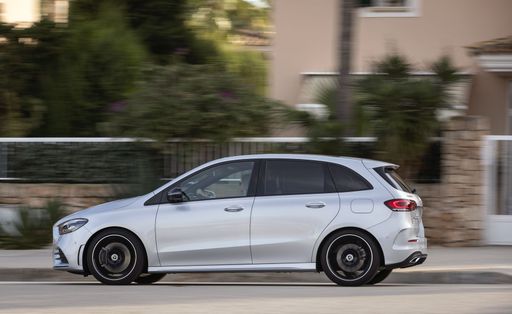 @ group-media.mercedes-benz.com
@ group-media.mercedes-benz.com
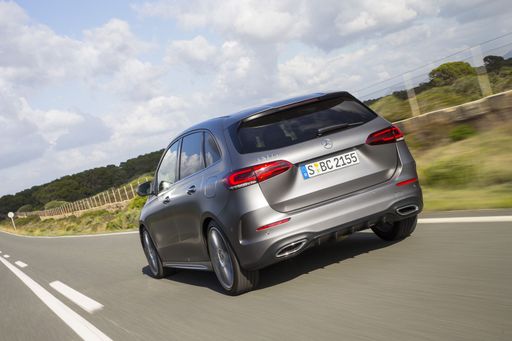 @ group-media.mercedes-benz.com
@ group-media.mercedes-benz.com
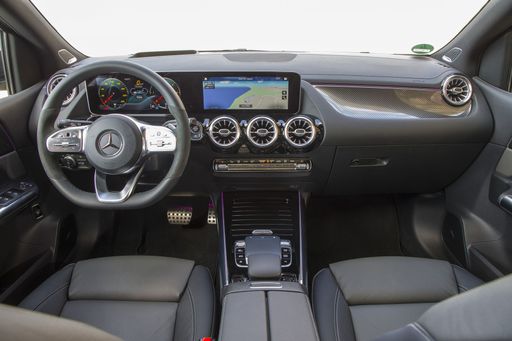 @ group-media.mercedes-benz.com
@ group-media.mercedes-benz.com
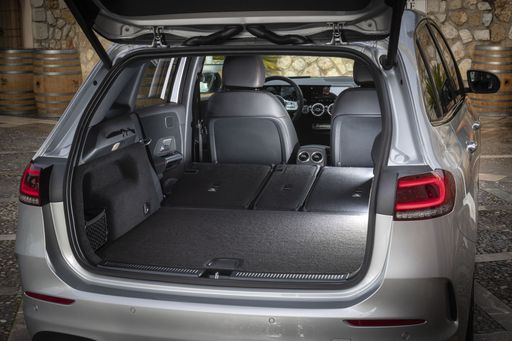 @ group-media.mercedes-benz.com
@ group-media.mercedes-benz.com
 @ media.stellantis.com
@ media.stellantis.com
|
 @ group-media.mercedes-benz.com
@ group-media.mercedes-benz.com
|
|
|
|
Costs and Consumption |
|
|---|---|
|
Price
25700 - 41600 £
|
Price
33100 - 52500 £
|
|
Consumption L/100km
4.8 - 5.4 L
|
Consumption L/100km
2.5 - 6.9 L
|
|
Consumption kWh/100km
15.1 - 17.5 kWh
|
Consumption kWh/100km
-
|
|
Electric Range
344 - 410 km
|
Electric Range
83 km
|
|
Battery Capacity
0.4 - 51 kWh
|
Battery Capacity
12.90 kWh
|
|
co2
0 - 119 g/km
|
co2
56 - 156 g/km
|
|
Fuel tank capacity
44 - 45 L
|
Fuel tank capacity
35 - 51 L
|
Dimensions and Body |
|
|---|---|
|
Body Type
SUV
|
Body Type
MPV
|
|
Seats
5
|
Seats
5
|
|
Doors
5
|
Doors
5
|
|
Curb weight
1380 - 1689 kg
|
Curb weight
1405 - 1745 kg
|
|
Trunk capacity
340 - 415 L
|
Trunk capacity
405 - 455 L
|
|
Length
4173 mm
|
Length
4419 mm
|
|
Width
1781 mm
|
Width
1796 mm
|
|
Height
1505 - 1538 mm
|
Height
1562 mm
|
|
Max trunk capacity
1205 - 1280 L
|
Max trunk capacity
1440 - 1540 L
|
|
Payload
390 - 420 kg
|
Payload
505 - 550 kg
|
Engine and Performance |
|
|---|---|
|
Engine Type
Electric, Petrol MHEV
|
Engine Type
Plugin Hybrid, Petrol MHEV, Diesel
|
|
Transmission
Automatic
|
Transmission
Automatic
|
|
Transmission Detail
Dual-Clutch Automatic, Reduction Gearbox
|
Transmission Detail
Dual-Clutch Automatic
|
|
Drive Type
Front-Wheel Drive, All-Wheel Drive
|
Drive Type
Front-Wheel Drive, All-Wheel Drive
|
|
Power HP
136 - 280 HP
|
Power HP
116 - 238 HP
|
|
Acceleration 0-100km/h
5.9 - 9.1 s
|
Acceleration 0-100km/h
6.5 - 10 s
|
|
Max Speed
150 - 206 km/h
|
Max Speed
200 - 250 km/h
|
|
Torque
230 - 345 Nm
|
Torque
200 - 450 Nm
|
|
Number of Cylinders
3
|
Number of Cylinders
4
|
|
Power kW
100 - 207 kW
|
Power kW
85 - 175 kW
|
|
Engine capacity
1199 cm3
|
Engine capacity
1332 - 1991 cm3
|
General |
|
|---|---|
|
Model Year
2024 - 2025
|
Model Year
2024 - 2025
|
|
CO2 Efficiency Class
A, C, D
|
CO2 Efficiency Class
B, D, E, F
|
|
Brand
Alfa Romeo
|
Brand
Mercedes-Benz
|
What drive types are available for the Alfa Romeo Junior?
Available configurations include Front-Wheel Drive or All-Wheel Drive.
The prices and data displayed are estimates based on German list prices and may vary by country. This information is not legally binding.
